
Designing with students rather than for them: Rockford Public School
Designing with students rather than for them: Rockford Public School
Share
To create Rockford Public Schools’ new K-5 prototype school in the US, CannonDesign worked collaboratively with its students to achieve a design outcome that truly meets their needs.
During discovery meetings with the school principal, the design team learned the school district holds ‘morning briefings’ with their students, many of whom have disadvantageous, difficult and even traumatic home lives. The briefings are designed to help students release any negative energy they may hold, so they can best take in new information and collaborate with peers throughout the day.
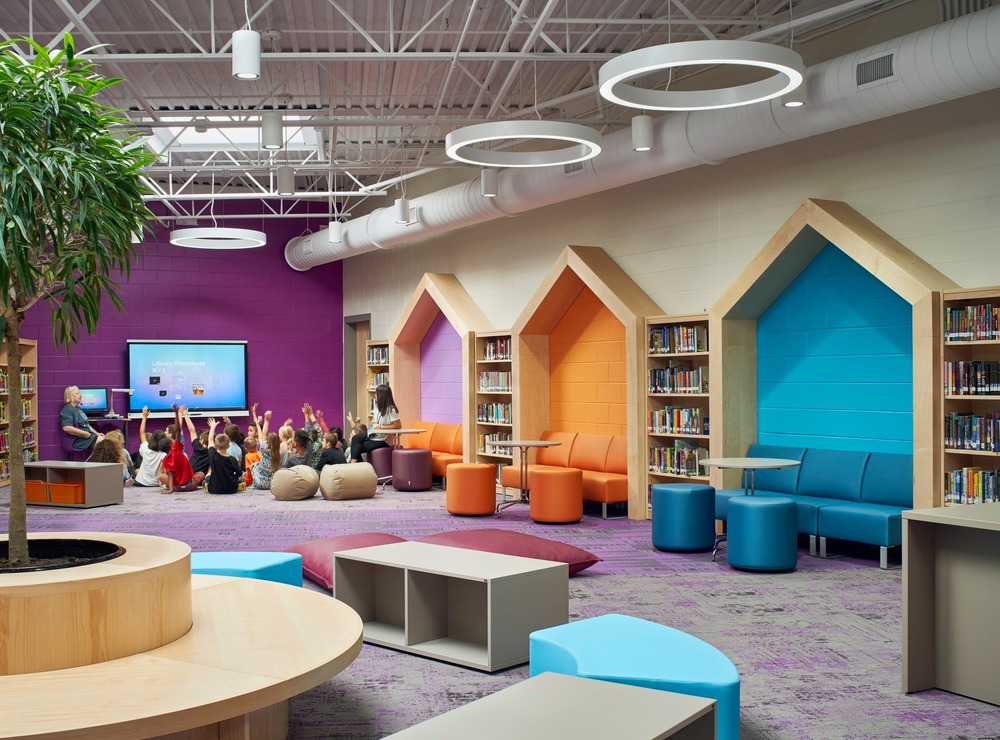
“Recognising the importance of these briefings with students, our team identified a need for more programmatic space to ensure they could occur and students could best thrive,” explains project director Stuart Brodsky.
Balancing budget and space constraints, the design team in collaboration with Rockford 4th grade students designed a covered town hall at the centre of the building. The town hall unites the school’s gymnasium, cafeteria, art spaces, library and other public spaces while providing a home for the briefings.
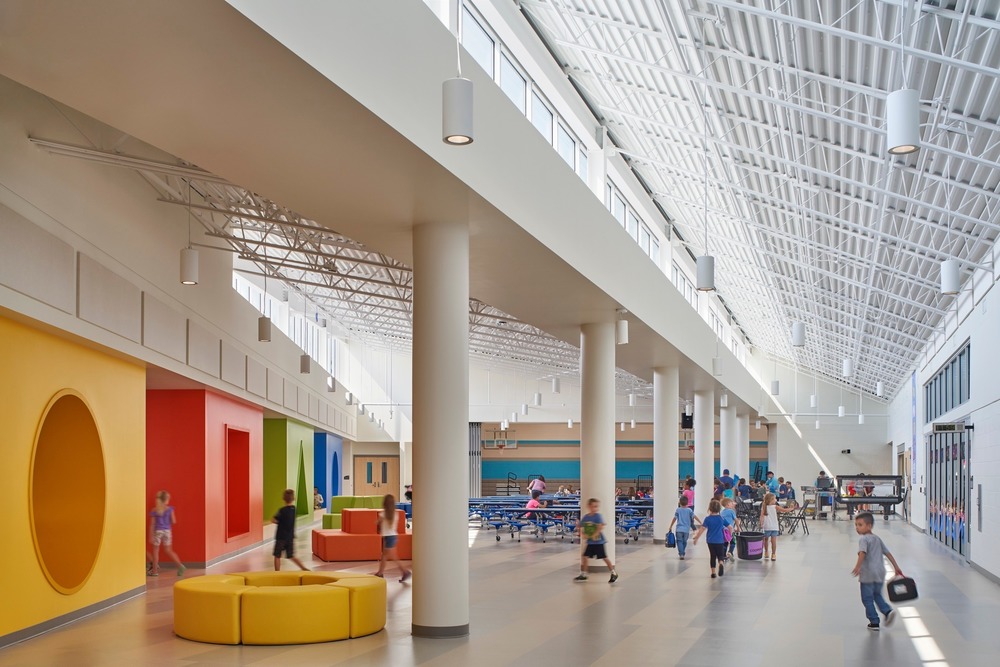
The central town hall is surrounded by grade-level learning communities specifically designed to the needs of the different age groupings: kindergarten, first and second, third and fourth and fifth grades.
“As a result of engaging students in the design process, the school moves away from traditional features – such as long corridors and fixed, immovable classroom objects that inhibit interaction and skill development – to embrace a more open village design concept,” says Brodsky.
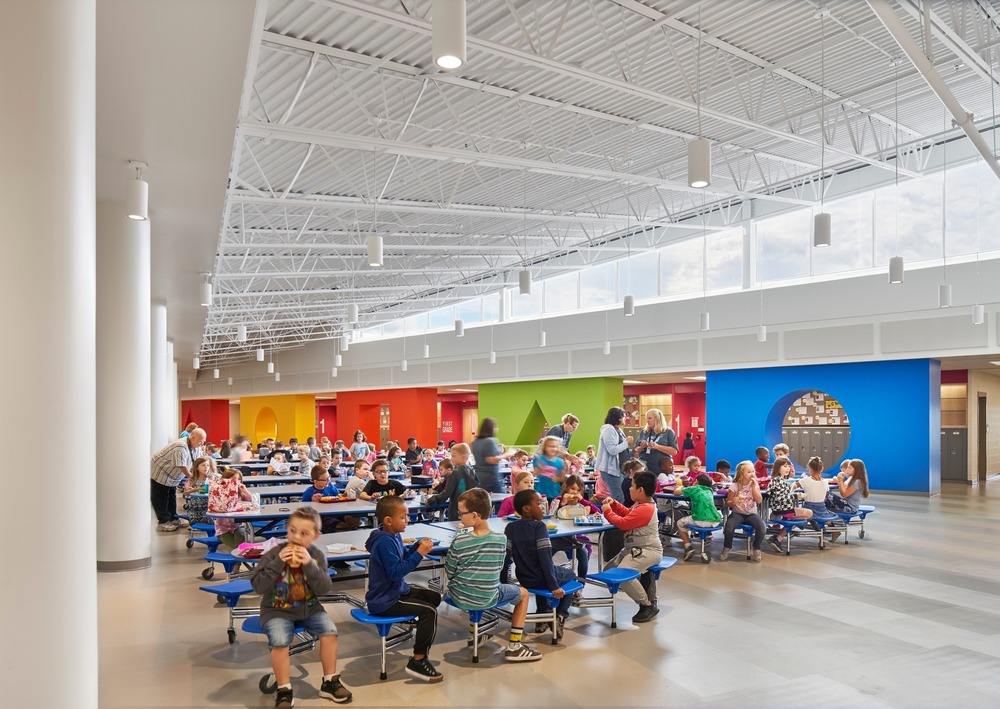
“The architecture engages children directly, at once both stimulating and educational. It inherently responds to the reality that entering kindergarten – in this case an 86,000 square-foot building – can be a remarkably difficult transition and intimidating experience.”
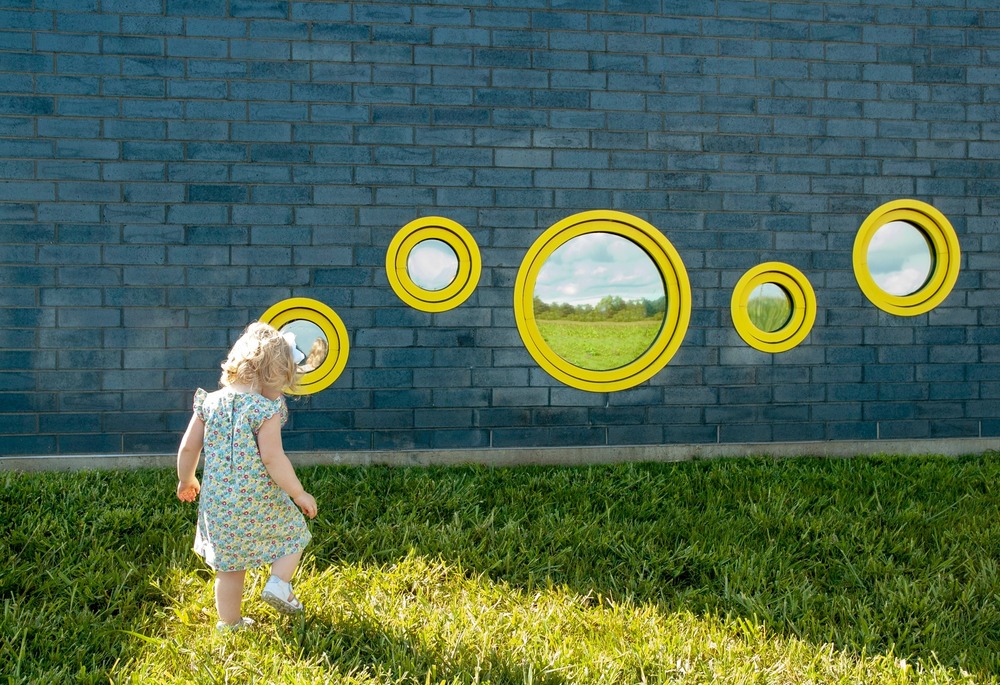
Influenced by the drawings of children, the design team created unique kindergarten spaces that are visible from the street to help eliminate any intimidation. Each space has unique geometric windows with different colours that break the scale of the school down to the one-room schoolhouse, allowing kindergarten students to understand their space in the larger community. The windows are installed near floor level allowing students to peer out and engage with the world around them.
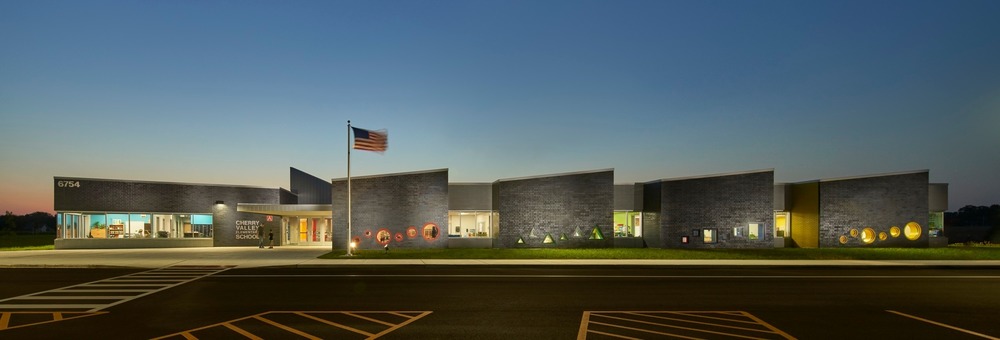
“The geometric strategy extends to other spaces throughout the building where students learn while playing. With integrated furniture, the students learn mass and void relationships in the physical world. This spatial reasoning is essential for their development. In the learning communities, the soft, moveable furniture is designed to be pushed, pulled, and repositioned any way the students desire. Their collaboration, community, and experience is remade by them each day,” explains Brodsky.
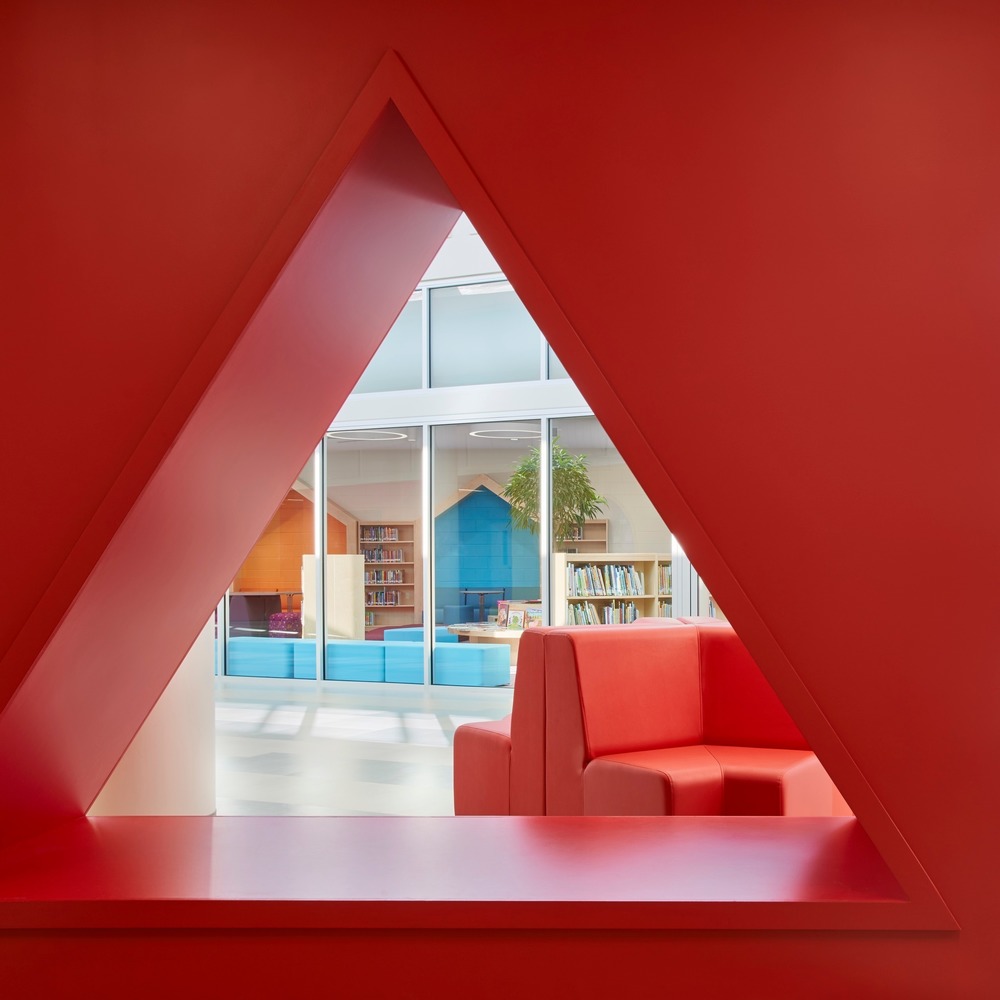
“Looking at both the macro (history, community, culture) and the micro (postures, cognitive development, learning styles) the design team synthesised a new prototype for both the students and the community.”
Photography by Christopher Barrett
















